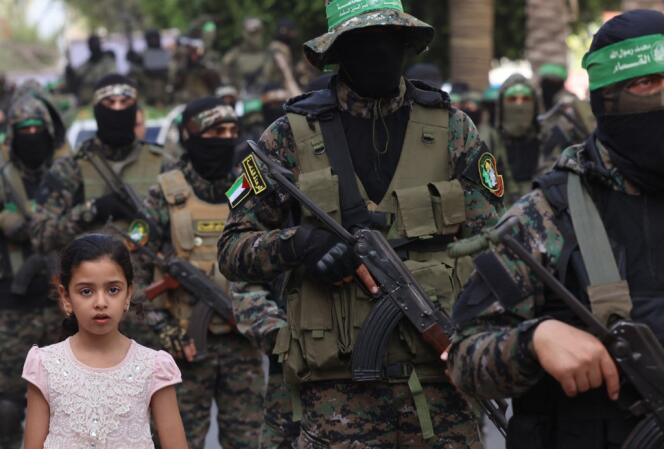End Hamas. Israeli Prime Minister Benjamin Netanyahu made the promise a few hours after the unprecedented bloodbath perpetrated by the Islamic Resistance Movement, its real name, at the gates of Gaza, Israel, on Saturday October 7. An implacable enemy of the Jewish state whose existence it has never recognized, Hamas took a considerable risk by brutally embarking on this coup. Considered inaccessible by Western diplomats as much as by Arab regimes hostile to any form of political Islam, the Palestinian movement has little support outside its Gaza confines. However, throughout its history, it has provided proof of its resilience.
The former Palestinian subsidiary of the Jordanian Muslim Brotherhood did not initially aspire to play the role it ultimately assumed. Its founders – all trained in Egypt, including their leader, Sheikh Ahmed Yassine, a quadriplegic cleric – were part of a regional movement to return to religion after the rout of Arab socialism against Israel in 1967.
In Gaza, the Israeli occupier initially viewed with kindness the emergence of pious or charitable associations capable of competing with the nationalists grouped in the Palestine Liberation Organization (PLO), perceived as the mortal adversary that had to be eradicated. By the mid-1980s, however, the impact of the Iranian revolution that had occurred a year earlier and competition from Islamic Jihad, another Islamist group in Gaza, had reoriented Sheikh Yassin towards the Palestinian national cause, in the name of the dogma that made the former Mandatory Palestine a waqf, an inalienable “Muslim property”.
Trained in terrorism in Lebanon
Hamas was born in December 1987, following the start of the first Intifada (“insurrection”) which broke out in the Gazan refugee camp of Jabaliya and which took it as much by surprise as the Palestinian national movement in exile. The conservatism of Gaza and the weight of refugees (two-thirds of the population) explain the rapid development of the movement, less hampered than elsewhere by Palestinian clan solidarity attached to a specific geographical space.
Equipped with a maximalist charter – like the PLO at its creation – tinged with anti-Semitism, Hamas turned towards armed action. The repression is severe. Sheikh Yassine, spiritual guide of the movement, was arrested and imprisoned in Israel in 1989. Then 400 of his activists were banished to Lebanon in 1992. There, they established contacts with Lebanese radical groups who converted them in particular to terrorism. Their influence was verified at the start of the Israeli-Palestinian peace process after the signing of the Oslo Accords in September 1993, which allowed the return to Palestinian land a year later of Yasser Arafat, the incontestable patron of the Palestinian national movement.
You have 65.02% of this article left to read. The rest is reserved for subscribers.
